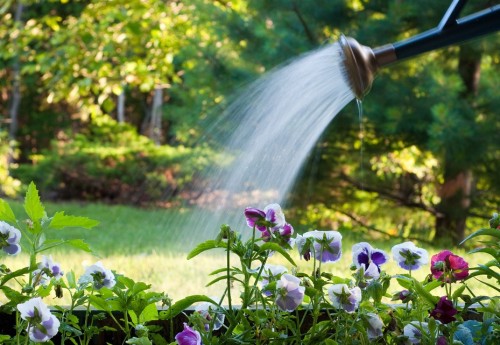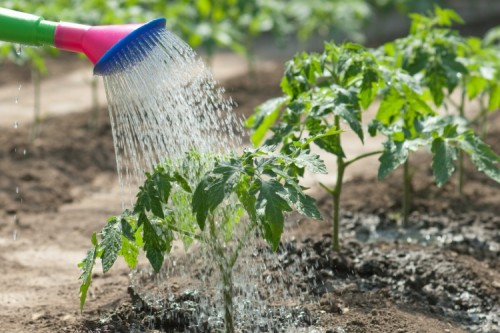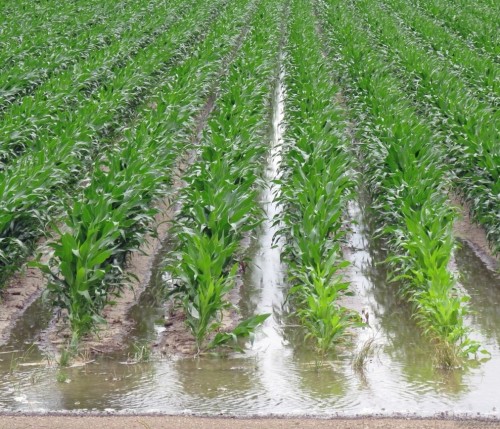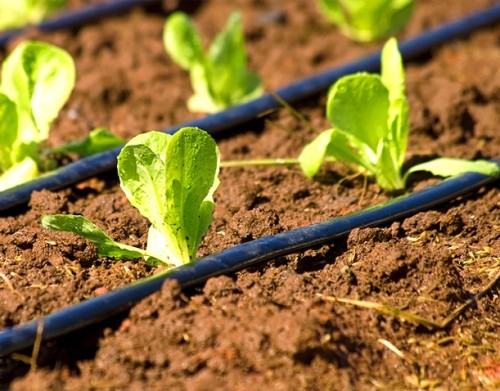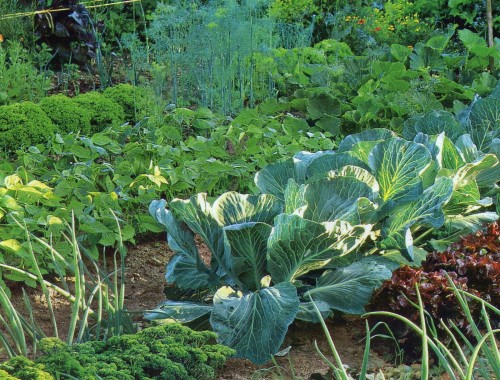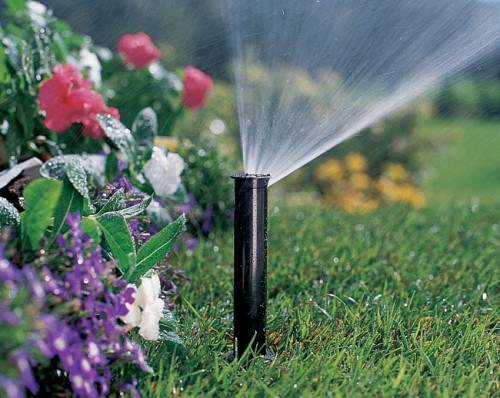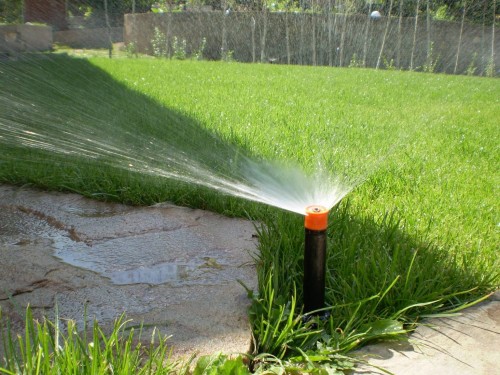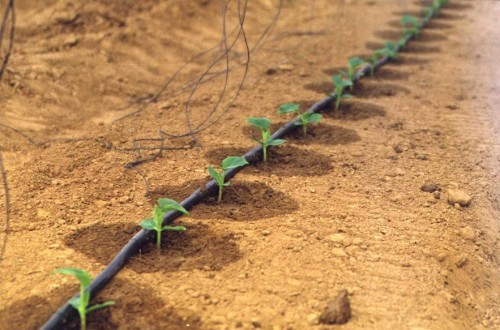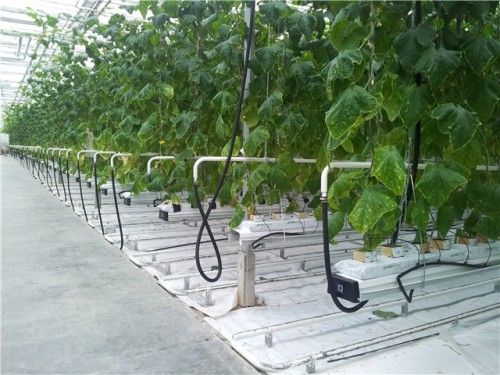
Watering the garden with your own hands Plot

From a properly organized system of irrigation of plants, their growth, development and fruiting directly depends on the preservation site. In this article we will tell you about the basic rules and methods of moisturizing cultures, as well as give detailed instructions on the organization of watering of the garden with their own hands.
Content
The main rules of watering plants
Wrapping cultures on the site taken at a certain time of the day: in the evening or early in the morning. It is impossible to carry out a similar procedure under bright solar rays, as water drops play the role of lenses and leave burns on the leaves and colors of the plants. In addition, in hot time, water from the soil will quickly evaporate, and the roots will not have time to enable moisture. Properly organize watering on the site some useful recommendations will help:
- Moisturizing culture should be regularly using moderate water portions. In hot weather you can give plants a little more fluid or water them more often. However, it is not worth allowing moisture moisture in the soil, otherwise it can lead to the formation of rot and the emergence of various diseases.
- Do not forget that when the earth enhances after watering, a solid crust is formed on its surface. This crust slows the penetration of air to the roots and prevents the absorption of moisture during the next irrigation. To avoid such problems, the soil near the plants must be loosened, but it should be done only after it will dry.
- For most garden and garden plants, for example, for vegetables, berries and colors, the depth of watering should be at least 20-25 cm. As for trees and shrubs, whose root system lies deeper, they need to water a large amount of liquid, so that the soil is soaked in moisture At a minimum of 0.5 m.
- Make a well-watering more efficient will help ordinary straw. Put a small straw layer into each well, and the soil near the roots will not be covered with solid crust. In addition, the straw will help keep water in the soil for a long time - this is especially useful if you can't water the garden every day. It is also useful to use straw when growing strawberries or strawberries - so berries after irrigation will remain clean.
- A jet of water in the process of irrigation should not be directed to the roots of cultures. It flits the soil and damages the root system in young seedlings, and in adult plants can cause rotting roots.
- It is possible to water the plot only when the soil is completely dry after the previous moisture. To make sure that the soil dried not only on the surface, but also in the depths, stuff a metal rod into the ground. Wet soil will fill with small lumps.
- For each type of crops there are certain irrigation regulations, which relate to both the frequency of procedures and the amount of water used. Simplify the process of irrigation of the site will help the correct planting of plants, that is, cultures with similar irrigation standards is better to plant close to each other.
- Hanging garden manually, should not be in a hurry. Water the land with small portions, allowing moisture well to absorb into the ground. If you pour out the entire rate of water at a time, then its surplus will flow into another part of the garden.
- Plants, which remained without water for a long time, you need to water very carefully, feeding moisture with small portions and as often as possible. This will restore the soil ability to correctly absorb liquid.
- If evergreen cultures grow on your site, then before the onset of the first frosts should be watering them as much as possible - so they will be poisoned by a sufficient amount of liquid and penetrate well.
- Very often watering the garden is combined with fantasies of plants. A small amount of fertilizers dissolve in water and irrigation. Thus, cultures are constantly obtained by a small portion of nutrients, which favorably affects their development and growth.
- For watering of the garden, you can use ordinary tap water, but rainwater is considered an ideal option. If you do not have the opportunity to dial enough of it, then try to carry out irrigated water. Type the liquid into large open containers and leave it in the sun - so the water is not only dismissed, but also heats up to the desired temperature.
- It is advisable to moisturize the culture of water, the temperature of which is not lower than room floor. Firstly, overlooking the cold liquid is poorly absorbed by the roots of plants, and secondly, the young sprouts can cause shock.
Methods of irrigation of vegetables
Irrigation of plants on wells
This type of irrigation is ideal for trees and shrubs that grow one one and need a lot of water. To implement such a method around each culture, it is necessary to unscrew the well of sufficient diameter. So that moisture did not spread, the edges of the wells must have peculiar rollers from the ground. Water in the wells is most often poured by hand from a bucket or hose. It is best to use this method after the plants will end the growing season. As a result of such irrigation in the roots of crops, a sufficient amount of moisture remains, besides, the root system does not freeze. Another plus of the hole watering is that the water is spent quite economical. By minuses include greater complexity of the process.
Watering cultures in furrows
If your household plot is not located on the perfect horizontally terrain, but has at least a slight bias, then for watering plants you can use a similar method. The most difficult thing in this process is preliminary calculations. Given the composition and features of the soil, it is necessary to determine the depth and width of the furrow, as well as calculate the amount of fluid that will be spent for watering. If on the site a heavy type of soil, then the width of the furrow should be at least 80-90 cm. On the soils of the easy composition, it is recommended to make grooves with a width of about 0.5 m.
The depth of furrow directly depends on the degree of slope of the site. The smaller this indicator, the deeper you need to make grooves. The disadvantage of this method can be considered that in the process of irrigation, too much water is consumed, while not all moisture falls to the roots of plants. In addition, the furrows on the site occupy quite a lot of space, which can be used for planting plants.
Drip watering of the neck
One of the best irrigation methods is the drip watering. This method can be applied both on horizontal sites and in areas with any bias. During drip irrigation, water is spent very economically, and the sprinklers can be installed in any corner of the household site.
Instead of individual spins, a hose is quite suitable, which has small holes along the entire length. Moisture, served in a pressure hose, is pulled out through the holes outside and dissipates in small drops. The hose itself is often put on the ground, but if you want to constantly maintain it clean, then place it on special tripods - so it will be in suspended.
Water pressure is adjustable at the discretion of the user, the crane and valve flywheel applies. As a rule, for watering of the garden, pressure is used in 2 m of a water column - this indicator is quite sufficient, so that the fluid is well scattered around, and the hose itself is not broken from excessive pressure.
Let us list the main advantages of drip irrigation:
- the soil around the plants is moistened evenly;
- in addition to the soil, the moisture is also entered into the air, creating a favorable microclimate for the growth of cultures;
- water when watering is spent economically;
- with drip irrigation, the moisture enters only the roots of the desired plants, and the rest of the soil remains dry - it reduces the risk of weeds on the site;
- wet air around the plants contributes to the improvement of photosynthesis;
- the amount of fluid consumed can be adjusted at its discretion.
To use this method, you will need a lot of materials, the main of which are hoses. By cons of drip irrigation include the likelihood of the surface drain of water, which, in turn, becomes the cause of soil erosion.
Wick watering system
An unusual, but very effective way of moisturizing plants on the site is a wicking water. It is simple to organize it:
- Prepare a large water tank, as well as the flaps of a material that is poorly revealed.
- Put a small hole in the barrel and insert one end of the flap into it.
- Install the container next to a small bed.
- Fill the barrel with water, the free end of the fabric is in the ground, the barrel cover the lid, so that the moisture is not evaporated.
- The water from the fabric water will go to the ground, and the roots of the plants will absorb moisture as needed.
Note that the wider your wick will be, the more intense the fluid will flow into the soil. For a large garden of one barrel, it will be not enough. If you want to organize a similar watering on the entire site, refer to several tanks. The wick method has a single minus: you will not be able to control the degree of moisturgenicity of the soil.
Watering the garden with the pump
Roads, which have quite extensive areas in the area, it is more convenient to water crops using the pump. This device will allow in a short time to saturate a variety of green plantings. Depending on which locality is a garden, whether water has been held on it, which sources are available nearby, you should select the desired type of pump. These designs are submersible, drainage or superficial. Submersible, in turn, are divided into well and well, and surface pumps can be a vortex or centrifugal type.
Watering the garden with the help of an automatic system
The automatic irrigation system does everything independently, allowing the gardener to engage in other affairs. Often, such a system consists of several elements: control unit, pump, filters and nozzles, hoses, spinuses and devices to reduce water pressure. By setting up on its own automatic watering area, you relieve yourself from many problems and free time for other useful work. The benefit of this method is difficult to overestimate, among its advantages can be called the following:
- All oil irrigation parameters are automatically adjusted. The amount of fluid consumed, intervals between watering, the time of the procedure, etc. This allows you to adjust the process taking into account the weather and climatic conditions, the needs of individual crops in the water.
- The automatic irrigation system works independently, so a person does not need to follow it. The garden is irrigated at the right time, even if the landlord is in another place.
- The device parameters can be programmed for quite a long time: from month to year.
- The system does not require special care. All you need to do is periodically clean sprinklers.
Of course, the acquisition of such a system will require considerable financial costs from you, and it will take a certain amount of time and forces on the adjustment of the automatic watering of the garden. But, to acquire a similar device, you remove all the concerns about watering the garden plot from your shoulders. And the released time can be spent on both rest and useful classes.
We make the system of watering the garden with their own hands
As an example, we consider the process of creating a drip irrigation system on the site.
Preparatory work
- First of all, it is necessary to make a detailed plan for how all the elements of the irrigation system will be located on the household plot. To do this, draw on the paper scheme of the garden and indicate where the beds, trees and shrubs are located.
- Then mark the place where the pipes, hoses, sprinklers, as well as shut-off valves will be laid.
- So that in the process of counting the required number of parts did not arise difficulties, mark the location in which the pipes will be connected. For connecting elements, the start-connector is used or a tee that is mounted in the pipeline.
- Calculating the number of desired equipment, learn information about stamps and manufacturers, and then pick up the appropriate option. By the way, many dachas prefer not metallic, but plastic pipes. First, such structures are not subject to corrosion, they do not have substances contained in fertilizers, and secondly, plastic is much easier than metal and is much cheaper.
- The installation of pipes is carried out in three ways: they are bought into the ground, put on the ground surface or suspended above the soil on special supports. In the event that the pipes and hoses are bought into the ground, it is important to select parts with high strength characteristics.
- So that the sprinklers and hoses quickly clogged, install high cleaning filters.
- To create an automated system, you will need electrical controllers operating from autonomous batteries.
Organize drip watering with their own hands is easy, besides, such a system will not be too expensive. In order to arrange drip irrigation on the site, you will need rapid pipes, as well as plastic hoses with holes.
You can organize a similar system only after the garden is finally formed. Getting started to the process, the first thing to decide where and in which direction you will lay the spreading pipes. It is also desirable to bring both water removal towards the garden tracks.
Features of the installation of the drip irrigation system
The system of distributing elements is made from polyethylene watering pipes with a diameter of 40 mm. It makes no sense to use a smaller diameter because it is quite difficult to mount cranes on thin pipes. As for the length, it must be calculated in advance, at the stage of compiling plan.
Consider the step-by-step process of installation of the drip irrigation system:
- For the manufacture of distributing pipes, cut off the length of the fragments and put each end of each pipe along the plug.
- The second end must be connected to the water pipe with a ball crane. If you want to breed the main pipes in different directions, you will need to make three removal, to one of which will be connected by a watering hose. In the tap, which leads to a plumbing system, build a ball valve - it will help you control the flow of water into the sleeve. To the spreading tube, attach the transition to the diameter of the water supply system. Then, between the ball crane and the spreading pipe, set the detachable connection. It is necessary in order to disable the irrigation system in case of need and hide it for storage.
- Depending on what distance rows with plants will be located, it is necessary to drill in a hole of the hole with a diameter of about 1.4 cm. Each hole must be located opposite a row with grown crops. If drip ribbons are directed in opposite sides, then on the other side of the pipe drill the same holes.
- After that, it is necessary to install a sealing gum into the distribution crane.
- In the drilled holes, secure the cranes by sending them to the handle up. These elements will help control the flow of water supplied in one or another direction. This will be useful if cultures are growing with different moisturizing needs on the beds.
- The next step must be attached to the spreading pipes to the water supply system using the mounted plug-in connection.
- Drip ribbons rubbing between rows of plants.
- End ribbons Connect to handouts installed in the main pipe. It is done very simple: the sleeve is put on the tap and fixed with a special plastic nut.
- The second end of the drip ribbon should be drowning. This can be done using a specially intended plug, but if you do not want to spend extra money, just overcover the hose and secure this place with a thread. If the sleeves for watering do not have the necessary length, they can be increasing using special connectors.
- After all processes are executed, you can open the cranes and test the drip irrigation system.
Important: Plastic sleeves for drip irrigation are not designed for a large water pressure, if the pressure is too strong, the tape can burst.
By turning on the irrigation system, adjust the flow of water in such a way that the amount of the supplied and the liquid used was the same. In the event that you want to fertilize plants at the same time with their moisture, additionally connect the system to a large container. Set the container at a height of about 1 m above the ground level and fill it with water with fertilizers dissolved in it.
Useful advice
- The barrel that you will use for feeding must be made of plastic. First, this material does not rust, and secondly, it is easier to clean it from fertilizer residues.
- Filters in the system must be changed regularly.
- It is desirable to use liquid or water soluble substances as feeding to avoid deposits on filters and pipes.
- After the completion of the feeding, the drip irrigation system should be thoroughly rinsed with a flow of pure water.
- Removing the system for winter storage, rinse it once again, then dry, and only then fold and hide.




